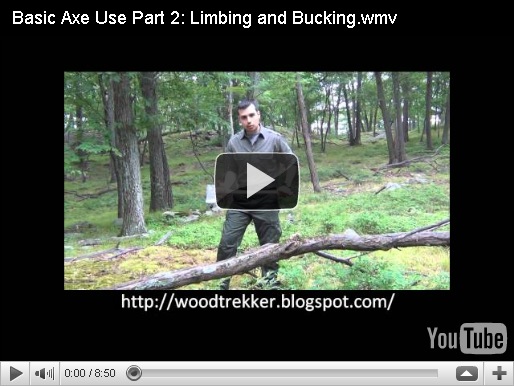This is the second part of the Basic Axe Use videos. Here I discuss bucking a tree, which uses a technique very similar to what you saw in the felling video.
Part 2 of 4:
Some points that were not mentioned in the video:
1. While in this video I spoke about how different types of trees have very different properties when it comes to chopping and splitting, that is also true about the distinction between green wood and dry wood. Green wood is much easier to chop through than dry wood. Dry hardwood will usually be the most time consuming to go through, although it tends to be the best fire wood.
2. You may have seen professionals and axemen in the professional circuits using a bucking technique where they stand on top of the log and then chop between their legs. While that is an efficient technique, it is also very dangerous. As such, I do not recommend it unless you are an expert. There is more than one guy nicknamed “stumpy” in the competition circuits.
3. These days bucking is rarely done with an axe. The crosscut saw has taken over that job because it can do it faster, and wastes less wood. That being said, the axe can be an effective tool for the job. As you saw, it took me two (2) minutes to chop through a six (6) inch log of dry oak.
4. As you can see at the end of the video, one of my swings does not bite into the wood, but actually glances off. Always think ahead, and plan on where the axe will end up if you miss. A sharp axe with a thin bit will reduce such glancing.
5. Notice that when the log moves during bucking, I reposition my whole body before I continue swinging the axe. That way I keep my swing exactly the same. Do not try to adjust the distance between you and the wood by bending your arms, as it will ruin your technique. Adjust either by relocating your body, or moving your hips to adjust the positioning of the axe.

No comments:
Post a Comment